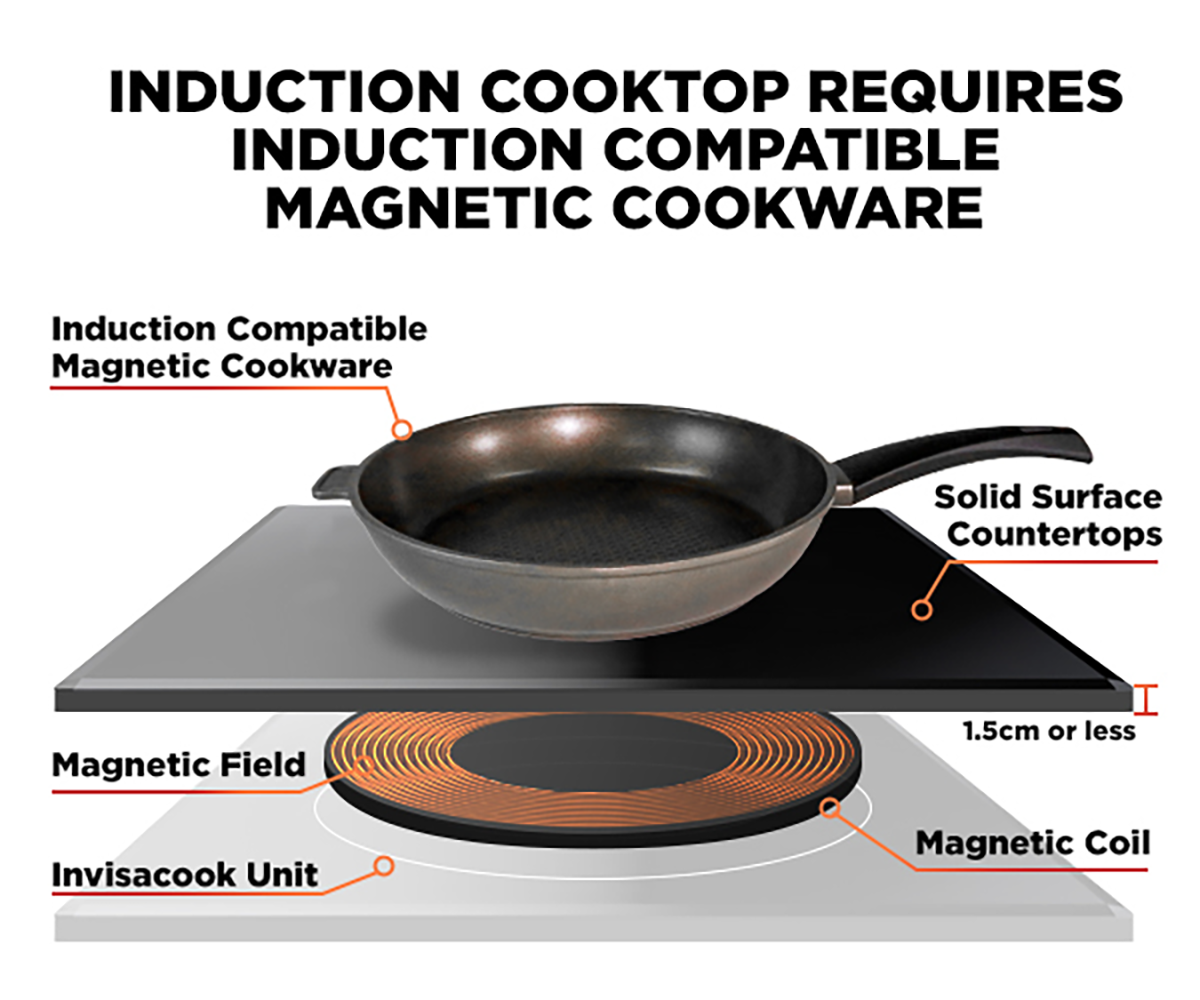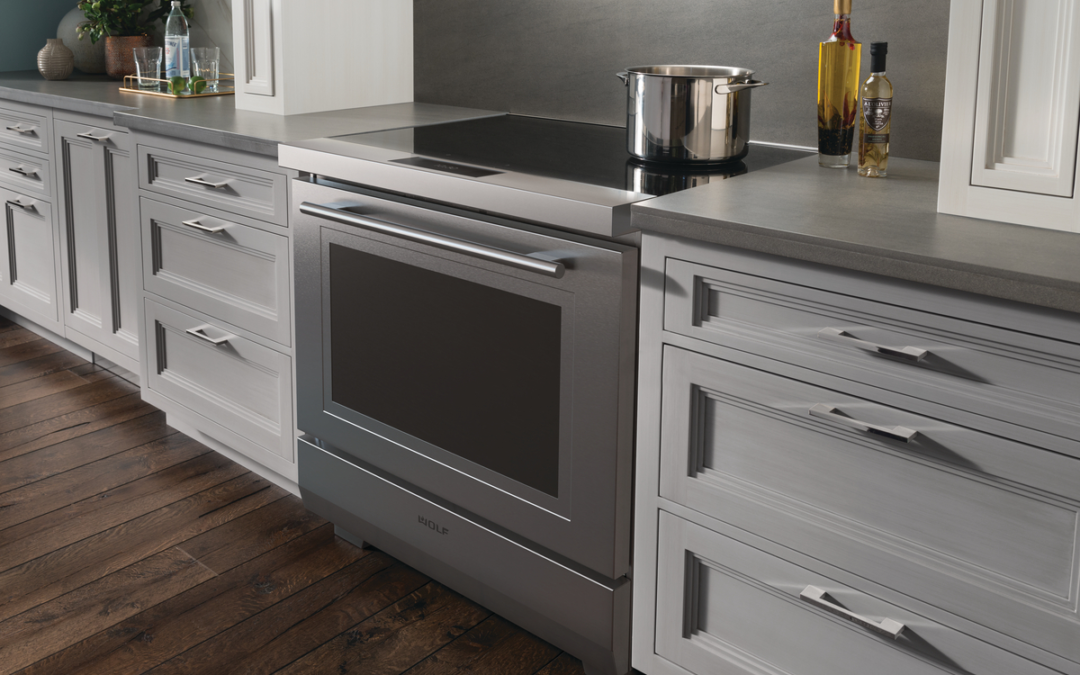Imagine using a cooktop where the pot gets hot, but the stovetop remains cold. Imagine being able to boil water twice as fast as a gas range but without the danger of an open flame. Imagine reducing not only the toxic gases within your home but also reducing the combustion by-products which are causing global warming. Does it sound like some sort of futuristic science fiction magic? In fact, the technology exists today and is being rolled out in restaurants and homes around the world.
The technology is called induction cooking. Although it was invented in 1933, it has only really begun to gain widespread popularity in the past 10-15 years. Rather than heating up a resistance coil like the old-style electric cooktop or turning on a high powered infer red lamp like the more recent radiant cooktops, induction cooking uses a powerful magnetic field to cause a ferrous pot or pan to heat up without creating waste heat in the burner itself.
This allows for two things: the process is much faster, and heat can be applied or reduced quickly, which is the attraction of gas cooking. It also is much more energy efficient because all of the energy is transferred to the cooking vessel rather extraneous objects like the coils or the metal burner guides. Another great benefit is that combustion by-products from burning gas are not released into the kitchen environment. It was recently published that children in homes with gas stoves are 25-30% more likely to suffer from asthma with combustion by-products being identified as likely culprits.

So, with induction cooking being faster, safer, and more energy efficient than other alternatives, why are not all kitchens being outfitted with these devices? There are several reasons. The devices, because they are a newer technology, are not made as productively and inexpensively as older style cooktops. Also because of how they work, all pots and pans must be made from ferrous materials, old aluminum and copper pots and pans will not work and so some people are naturally relevant to retire all their non-compliant cookware when buying a new cooktop or oven.

The other issue us that natural gas, because it is being made domestically in large quantities that5s to the development of fracking, is extremely inexpensive at the moment relative to electricity. This however neglects the climate effects of the burning of hydrocarbons like natural gas. Eventually, when these costs are added back to the combustion fuels in the form of “carbon taxes” this cost advantage is likely to be temporary.
Still their performance is superior to gas cooktops and therefor many top restaurants are adopting them. They also throw off far less excess heat and therefore are less uncomfortably hot, particularly in the summer. As they become more widespread, starting in luxury or sustainable kitchens, and then working their way into more modest kitchens over time, induction cooktops will likely become less expensive and more widespread in their use over the next ton to twenty years. If it is time to replace your existing cooktop, the tax credits available for electric energy star appliance like induction cooktops are eligible for these federal grants.

Furthermore, if you have children in the house or are renting your home out, the safety and lower combustion output of induction cooktops will also make them attractive alternatives to conventional models. We live in exciting times where heat pumps pull heat from the ground or even from freezing air and cooktops and cook, almost by magic by using the power of magnets. It is a time where saving money on power and helping save the environment can be done at the same time. And now, with the tax credits available from the Inflation Reduction Act, you can even cover the cost of the transition!
Ross Cann, RA, AIA, LEED AP, is an author, historian, and practicing architect living and working in Newport, RI. He holds degrees with honor in Architecture from Yale, Cambridge, and Columbia Universities.
At A4 Architecture + Planning we are working our way to incorporate induction stovetops into our kitchens, to provide more sustainable and cost-effective solutions for our clients. If you are interested in learning more about induction stovetops and their benefits reach out to us at any time!
